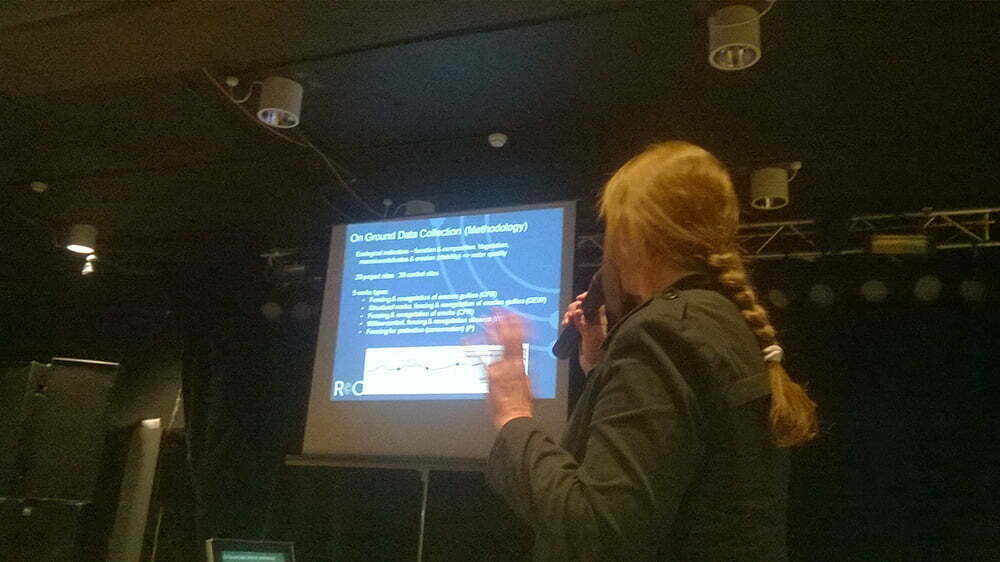The Institute of Applied Ecology and University of Canberra recently held a water seminar and pub night, where Siwan Lovett and Lori Gould presented an overview of the Rivers of Carbon approach, highlighted the principles and science upon which it is based, as well as discussed why this type of project is needed to meet current river restoration and climate change challenges.
Recent research reviewing the costs and benefits of a carbon economy for the conservation of Australian biodiversity (Bradshaw et al) concluded that the most important area of work to mitigate climate impacts and protect and conserve biodiversity, is to plant diverse, resilient native vegetation linking existing patches of remnant vegetation to create living corridors. Riparian zones are ideal locations in the landscape to achieve these aims, they are contiguous, clearly identifiable, and often parts of the farm landholders are prepared to manage differently within the context of their overall farm plan. The project works within the context of the carbon economy, providing incentives for landholders to plant trees that they may later use as carbon offsets or credits. By focusing on win:win outcomes, landholders can be financially supported in their restoration activities, while also mitigating greenhouse gases, sequestering carbon, creating terrestrial habitat for endangered species, improving water quality and boosting in-stream productivity. In addition to the biophysical outcomes, is a communications effort that captures landholder experience and knowledge through stories, matches it with science, and shares it using a range of different techniques (workshops, social media, farm walks etc.).



